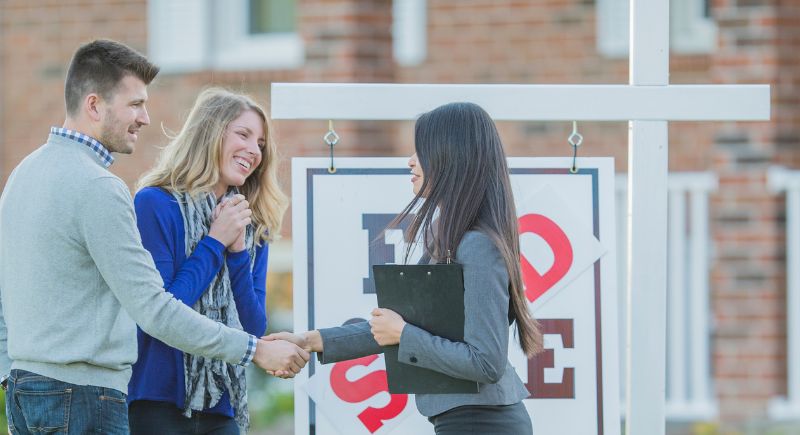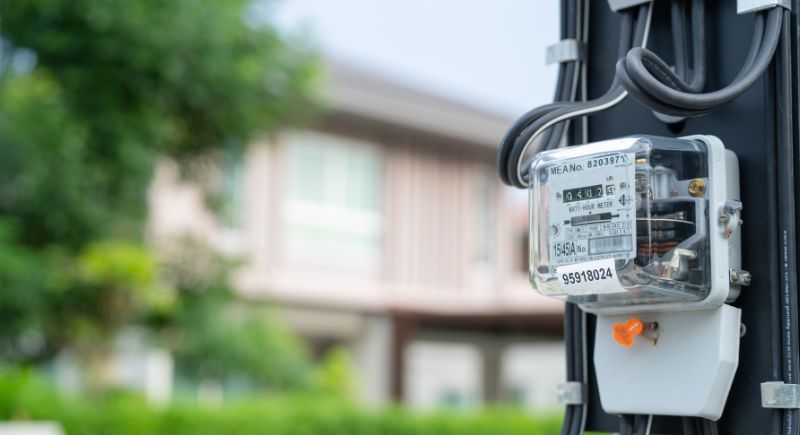Between rising costs and wages that barely budge, everyday essentials are starting to feel out of reach for millions of families. Let’s not even talk about luxuries at this point. This is about affording things that were once considered normal.
If current trends continue, the next decade could bring even more financial strain. Here’s a look at the everyday things middle-class families may no longer be able to afford by 2035.
Buying a Home

Credit: Getty Images
Buying a house used to be a milestone for people from every generation, but it’s becoming a long shot. In 2025, a typical new home cost around $460,000, with mortgage rates hovering above 6%. Most middle-class families couldn’t qualify for that kind of loan, even with two incomes.
Sending Kids to College

Credit: corelens
Gone are the days when parents saved for college with a jar of loose change and a prayer. Tuition has skyrocketed, and loans follow grads for decades. Without scholarships or major financial aid, many families are rethinking the value of that traditional four-year degree.
Just Going to the Doctor

Credit: Getty Images
You’d think staying healthy wouldn’t feel like a financial gamble. But in 2023, family health plans averaged nearly $24,000 a year. That’s before prescriptions or surprise ER visits. Without solid employer coverage, many people are skipping care altogether—and that’s turning small issues into big ones.
Paying for Daycare

Credit: Getty Images
Childcare now rivals the cost of a second rent. In many cities, it’s $1,500 a month per kid. If you’ve got two children under five, you’re basically working just to pay for their care. Finding a reliable provider is another stress that parents didn’t sign up for.
Building a Retirement Fund

Credit: Canva
The truth is that most people aren’t maxing out their 401(k). Middle-class families are lucky if they can save anything at all. Between bills, groceries, and housing, retirement planning gets pushed to the back burner. And with Social Security looking shaky, that’s a problem no one can ignore.
Taking Care of Aging Parents

Credit: Getty Images
Long-term care is expensive and can be brutal on a budget. By 2029, over half of middle-income seniors won’t be able to afford assisted living, even if they spend every dollar they earn. Adult kids are stepping in more often, but that emotional and financial toll adds up fast.
Buying a New Car

Credit: Getty Images
Ever since the average price has shot past $47,000, even entry-level models come packed with tech, which means higher costs. Most families can't afford a new vehicle without a long loan or trade-offs that stretch the monthly budget too thin.
Going on a Real Vacation

Credit: Getty Images
A week at the beach or a trip to Disneyland is becoming unrealistic. Costs like airfare, gas, hotel rates, and food are turning family vacations into staycations. Many now choose weekend getaways or skip travel entirely to avoid dipping into savings or racking up credit card debt. In 10 years, even weekend getaways would sound almost impossible.
Saving for Emergencies

Credit: Getty Images
Life happens. But failing to save for a rainy day is where things fall apart. Most Americans can’t cover a $1,000 emergency without borrowing. Middle-class families live paycheck to paycheck, so even a flat tire or ER visit can lead to stress and debt. That “rainy day fund” just keeps getting harder to build.
Keeping Up With Home Repairs

Credit: pexels
A leaky roof or broken water heater may not be a small problem anymore. The average cost of basic home repairs has jumped sharply due to higher labor rates and material shortages. Even routine fixes now require families to either dip into savings or delay maintenance, both of which can end up costing more later.
Eating Healthy

Credit: Getty Images
A cart full of fresh produce, whole grains, and lean proteins easily costs more than a basket of frozen meals and snacks. Grocery prices are climbing, and many families pick cheaper, processed foods—not because they want to, but because they have to.
Staying Connected

Credit: Getty Images
Internet access is non-negotiable now. School, work, banking—even doctor visits—often happen online. That said, high-speed internet, streaming subscriptions, and device upgrades stack up fast. Families are spending hundreds each month just to stay connected, and for those with kids or remote jobs, cutting back isn’t really an option.
Using Public Transit

Credit: pexels
Many public transit systems are suffering from service cuts, aging infrastructure, and fare hikes. For some riders, buses and trains are no longer reliable or safe, which leaves families paying more for gas or rideshares just to get to work or school on time.
Paying the Power Bill

Credit: Canva
Monthly utility bills are climbing, especially in homes with older appliances or poor insulation. Heating and cooling account for a huge chunk of the average power bill. Families want to make energy-efficient upgrades, but those upgrades aren’t cheap. So most stay stuck with rising costs and few realistic ways to cut back.
Affording Insurance

Credit: 89Stocker
Whether it's home, health, or auto insurance, premiums are rising across the board. And the coverage is often less generous than it used to be. Some middle-class homeowners in high-risk areas can't even find affordable policies. What was once financial protection is now another burden to budget around.
